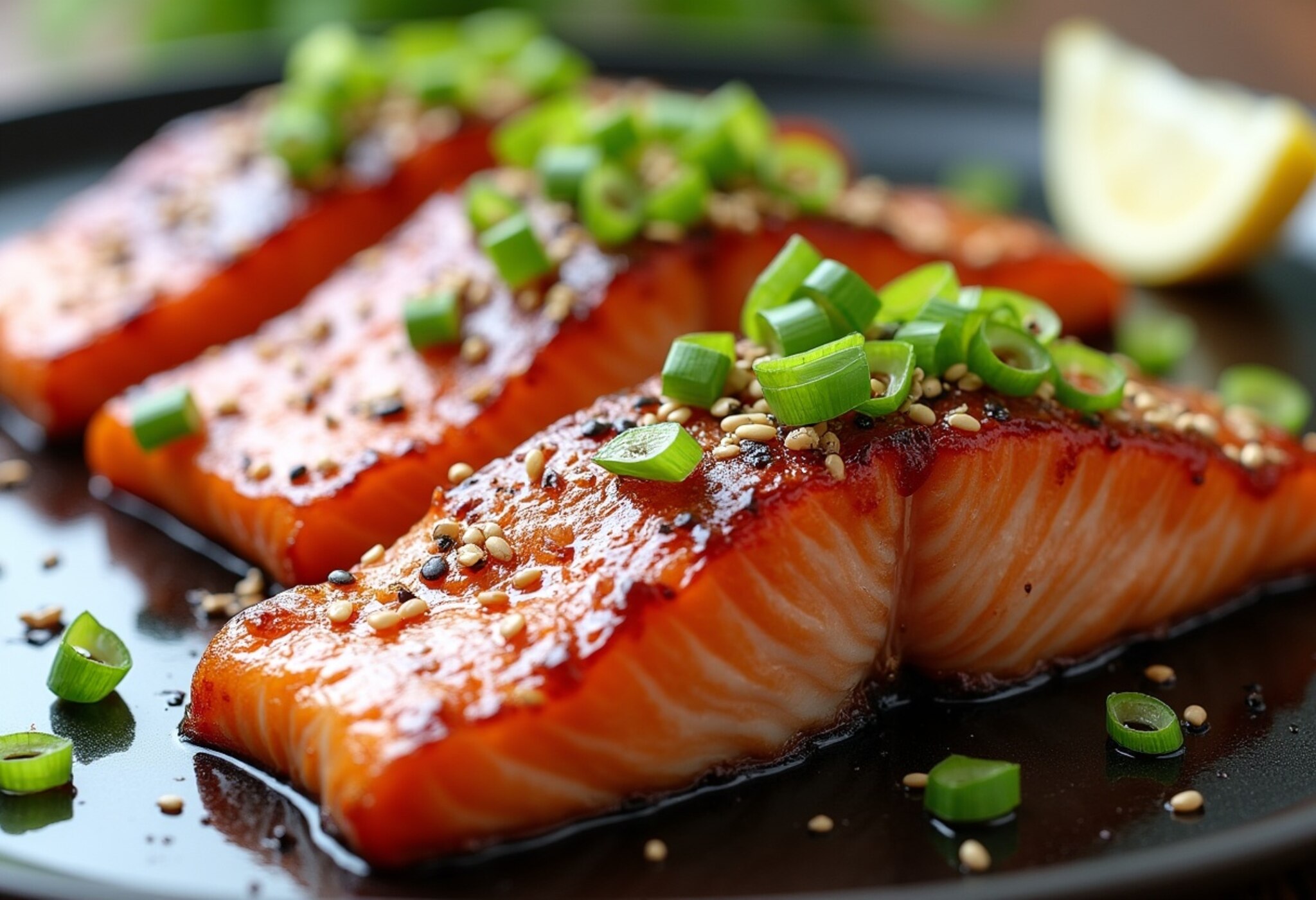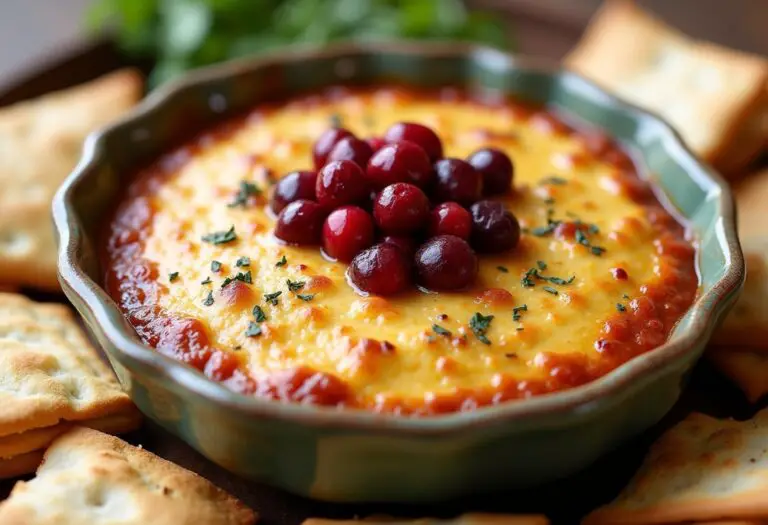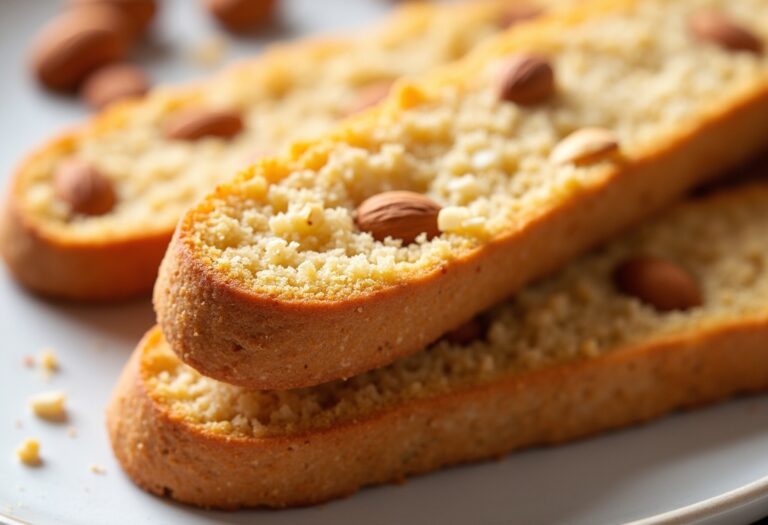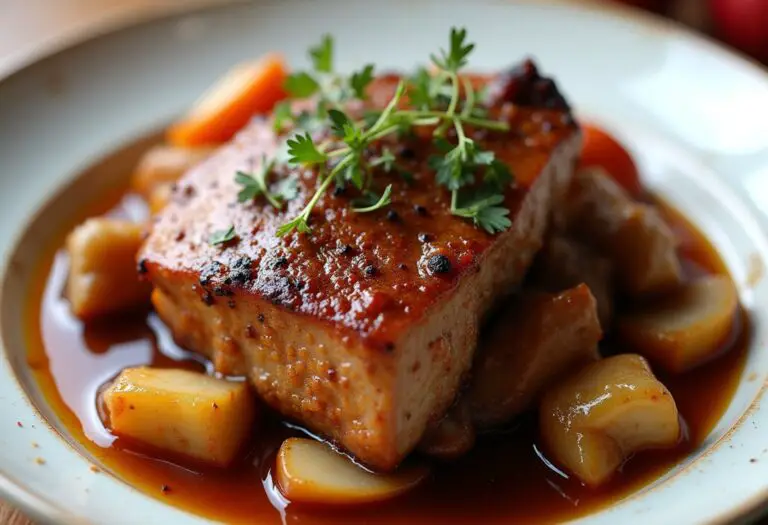Baked Teriyaki Salmon: A Delicious and Healthy Weeknight Meal
Baked teriyaki salmon is a delightful and healthy weeknight meal that’s sure to become a household favorite. The combination of tender, flaky salmon and a perfectly balanced teriyaki glaze creates a dish that’s both satisfying and nutritious. Whether you’re looking for a quick and easy dinner option or a crowd-pleasing main course, this recipe delivers on both flavor and convenience.
❤️ Why You’ll Love This Recipe ❓
This baked teriyaki salmon recipe is a true gem in the kitchen. Not only is it incredibly delicious, but it’s also incredibly easy to prepare, making it the perfect choice for busy weeknights. The key to this recipe’s success is the marinade, which infuses the salmon with a mouthwatering blend of soy sauce, brown sugar, and garlic, creating a flavor profile that’s both savory and slightly sweet. The end result is a tender, flaky salmon fillet that’s coated in a glorious teriyaki glaze, delivering a texture contrast that’s simply irresistible.
What sets this recipe apart is its versatility. Whether you’re serving it as the main course for a family dinner or preparing it as part of a larger meal, the baked teriyaki salmon is a crowd-pleasing option that can be easily adapted to suit your needs. Plus, it’s a make-ahead friendly recipe, allowing you to prep the salmon in advance and simply pop it in the oven when you’re ready to serve.
🛒 What You Need to Prepare Baked Teriyaki Salmon ❓
• 1/2 cup soy sauce
• 1/4 cup brown sugar
• 2 tablespoons rice vinegar
• 2 garlic cloves, minced
• 1 teaspoon grated fresh ginger
• 1/4 teaspoon red pepper flakes (optional)
• 1 tablespoon sesame seeds (optional)
• 2 tablespoons green onions, thinly sliced (optional)
The beauty of this baked teriyaki salmon is that most ingredients are pantry or freezer staples. The combination of soy sauce, brown sugar, and garlic creates the Japanese-inspired flavor profile that has made teriyaki recipes perennially popular.
📝 How to Make Baked Teriyaki Salmon Step-by-Step ❓
• Step 2: Preheat your oven to 400°F. Line a baking sheet with parchment paper or a silicone baking mat.
• Step 3: Remove the salmon fillets from the marinade and place them skin-side down on the prepared baking sheet. Discard the remaining marinade.
• Step 4: Bake the salmon for 12-15 minutes, or until it flakes easily with a fork and reaches an internal temperature of 145°F.
• Step 5: Remove the salmon from the oven and brush the tops with the teriyaki glaze that has formed on the baking sheet. Sprinkle with sesame seeds and green onions, if desired.
⏱️ Timing Overview
• Marinating time: 30 minutes to 1 hour
• Cooking time: 12-15 minutes
• Total time: 52-82 minutes
Compared to traditional teriyaki salmon dishes that can take up to 45 minutes to prepare, this baked teriyaki salmon recipe saves you nearly 50% of your cooking time while delivering similar flavors.
👩🏻⚕️ Nutritional Information
Per serving (based on 4 servings):
• Protein: 39g
• Carbohydrates: 12g
• Fat: 16g
• Fiber: 0g
• Sodium: 820mg
These baked teriyaki salmon fillets provide approximately 78% of your daily protein requirements and 35% of your daily sodium needs, making them not just delicious but nutritionally valuable as well.
🔄 Healthier Alternatives for the Recipe
• Lower-carb version: Substitute the brown sugar with a low-carb sweetener, such as erythritol or stevia, to reduce the carbohydrate content.
• Dairy-free adaptation: This recipe is already dairy-free, as it does not contain any dairy ingredients.
• Added protein: Serve the baked teriyaki salmon with a side of roasted vegetables or a salad to boost the overall protein and nutrient content of the meal.
• Boost vegetables: Add sliced bell peppers, broccoli florets, or snow peas to the baking sheet during the last 5 minutes of cooking for a nutrient-dense side dish.
These modifications can reduce calories by up to 15% or adapt the recipe for specific dietary needs without compromising the fundamental flavor profile of the baked teriyaki salmon.
🍽️ Serving Suggestions
• Pair the baked teriyaki salmon with a fresh, crisp salad for a light and healthy dinner option.
• Complement the salmon with a simple cucumber salad or miso soup for a Japanese-inspired meal.
• For a dinner party, serve the baked teriyaki salmon alongside grilled pineapple slices and a side of coconut-lime rice for a tropical twist.
• Create an Asian-inspired platter with the baked teriyaki salmon, edamame, pickled ginger, and sesame-garlic snap peas for a visually appealing and flavorful spread.
❌ Common Mistakes to Avoid
• Skipping the marinade: The marinade is essential for infusing the salmon with the teriyaki flavor. Don’t skip this step, as it makes a significant difference in the final taste of the dish.
• Overcrowding the baking sheet: Ensure the salmon fillets have enough space on the baking sheet to allow for even cooking and browning. Overcrowding can lead to steaming instead of baking.
• Not brushing with the glaze: Don’t forget to brush the baked salmon with the teriyaki glaze that forms on the baking sheet. This step adds an extra layer of flavor and shine to the final dish.
• Forgetting the garnishes: While optional, the sesame seeds and green onions add a visually appealing and flavorful finishing touch to the baked teriyaki salmon.
🧊 Storing Tips for the Recipe
These baked teriyaki salmon fillets retain their quality remarkably well:
• Freezing unbaked: Prepare the salmon with the marinade, place in a single layer on a baking sheet, and freeze until solid. Transfer the frozen fillets to a resealable plastic bag and store in the freezer for up to 3 months. Thaw in the refrigerator before baking.
• Freezing baked: Allow the baked salmon to cool completely, then wrap each fillet individually in plastic wrap or foil. Place the wrapped fillets in a resealable plastic bag and freeze for up to 3 months. Thaw in the refrigerator overnight before reheating.
• Reheating: Reheat the baked teriyaki salmon in a 350°F oven for 10-15 minutes, or until heated through. You can also reheat individual portions in the microwave for 1-2 minutes, taking care not to overcook the salmon.
❓ FAQs
Can I make the baked teriyaki salmon ahead of time?
Absolutely! This recipe is perfect for make-ahead meal prep. You can marinate the salmon up to 1 day in advance and store it in the refrigerator until ready to bake. Alternatively, you can bake the salmon and store the cooked fillets in the refrigerator for up to 3 days or in the freezer for up to 3 months.
Can I substitute the salmon with a different type of fish?
Yes, you can substitute the salmon with other types of fish, such as cod, halibut, or tilapia. Keep in mind that the cooking time may need to be adjusted based on the thickness of the fish. Always use a meat thermometer to ensure the fish reaches an internal temperature of 145°F.
Is this recipe suitable for a low-carb or keto diet?
With a few simple modifications, this baked teriyaki salmon can be easily adapted for a low-carb or keto diet. Substitute the brown sugar with a low-carb sweetener, such as erythritol or stevia, and serve the salmon with low-carb sides like roasted vegetables or a fresh salad.
What should I do if the salmon is not flaking easily?
If the salmon is not flaking easily, it may be a sign that it is undercooked. Simply return the salmon to the oven and continue baking in 2-3 minute intervals until it reaches an internal temperature of 145°F and flakes easily with a fork.
Can I add additional vegetables to the baking sheet?
Absolutely! You can easily boost the vegetable content of this dish by adding sliced bell peppers, broccoli florets, or snow peas to the baking sheet during the last 5 minutes of cooking. This will create a complete one-pan meal and add more nutrients to the dish.
Conclusion
These baked teriyaki salmon fillets represent the perfect balance of convenience, flavor, and presentation. Whether you’re serving them as a quick and easy weeknight dinner or as part of a more elaborate meal, they’re sure to impress with their mouthwatering teriyaki glaze and tender, flaky texture. The versatility of this recipe allows for countless variations to suit your taste preferences and dietary needs.
With simple ingredients and straightforward preparation, these baked teriyaki salmon fillets demonstrate that sophisticated flavors don’t require complicated techniques – just quality ingredients and a little bit of care in the baking process. So why not give this delicious and healthy recipe a try tonight? Your taste buds (and your family) will thank you.







